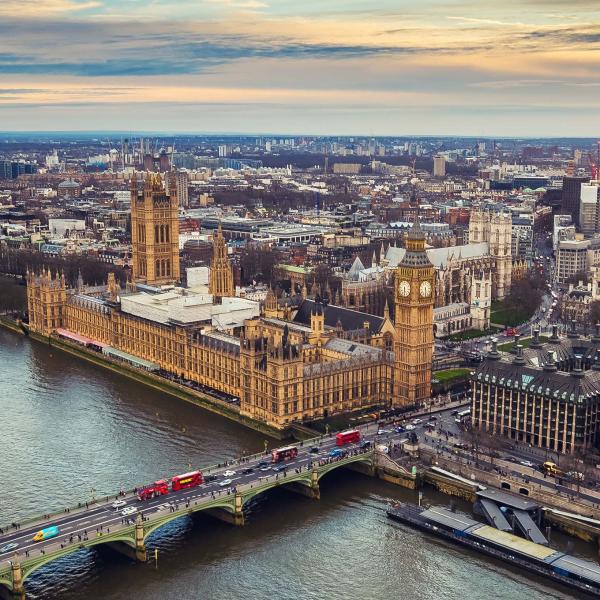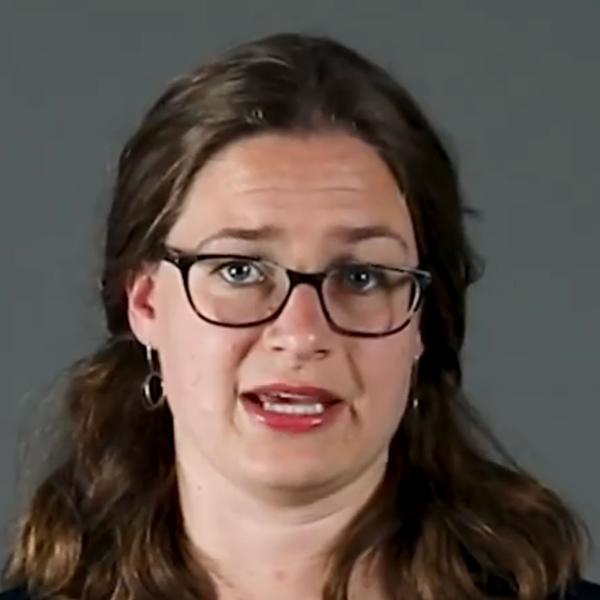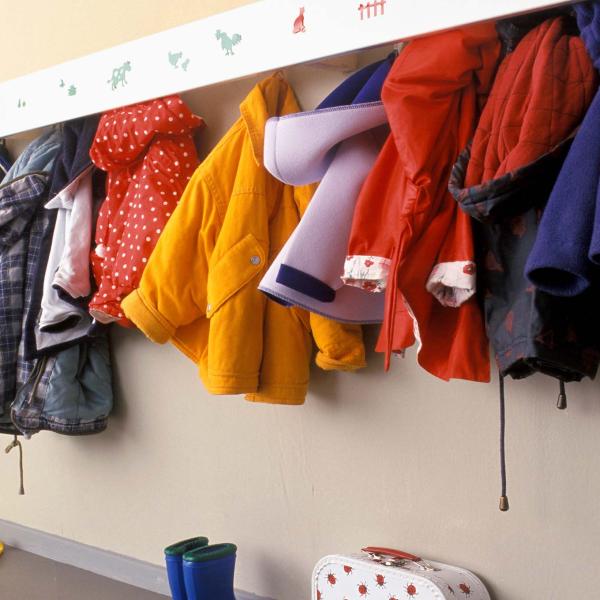In their general election manifestos, the main UK-wide political parties set out their ambitions for schools and colleges in England, including commitments on funding. In this article, we detail what this might mean for schools and colleges, and how this sits alongside the pressures they are already facing. We detail the commitments from all five main political parties making commitments for England, but mostly focus on the implications of those made by the Conservatives, Labour and Liberal Democrats, because the consequences are clearer.
Current picture on school and college funding
Following increases over the 2000s, both schools and colleges experienced real-terms cuts in funding per pupil in the 2010s. Total school spending per pupil in England fell by 9% in real terms in England between 2009-10 and 2019-20 (Sibieta, 2024). At the same time, spending per student in colleges – which includes both further education and sixth form colleges – fell by 14% (Drayton et al, 2023).
Since the last general election, both schools and colleges have received additional funding. This has resulted in a 10% real-terms increase in spending per school pupil (between 2019-20 and 2024-25), which will return spending per pupil to the level seen in 2009-10. There has also been additional funding for colleges, resulting in a 6% real-terms increase in spending per student aged 16-18 in colleges over the last five years. However, larger funding cuts over the 2000s mean that college funding per pupil is still 9% lower in real terms than in 2009-10.
The pressures facing schools and colleges
As set out in our recent report on the state of education in England, schools and teachers in England have much to be proud of, with recent international comparisons showing that teenagers in England have relatively high levels of skills in literacy and numeracy. School budgets (though not college spending) has also been relatively better protected than many other areas of public services over the last 14 years. But there are also a vast range of challenges facing schools, colleges and policymakers:
- Educational inequalities are large and persistent across all stages of education. Children eligible for free school meals are 29 percentage points less likely to get five good GCSEs than their peers, which then extend to inequalities in further and higher education.
- There are huge pressures on special educational needs provision. The number of pupils with the highest tier of support has grown by more than 60% since 2015, and costs per pupil are rising more quickly than general inflation.
- Absenteeism has grown significantly since the pandemic. Astonishingly 37% of disadvantaged pupils are now recorded as persistently absent, that is missing a day of school a fortnight or more.
- Mental health problems amongst young people have been increasing. 30% of girls aged 10–15 now meet the threshold for abnormally high emotional and behavioural difficulties.
- There are immense challenges on teacher recruitment and retention. Last year, teacher recruitment fell 13,000 short of its target. Each year, one-in-ten teachers leave the state school sector. Teacher pay is no higher in real terms than it was in 2001, while average earnings have grown by 18%. Average pay for college teachers is about 17% lower than for school teachers, and about one-in-six college teachers leave the profession each year (Sibieta and Tahir, 2023).
- The vocational education system is on – at least – its eighth major reform since 2010. Currently, the sector is undertaking a major overhaul of the post-16 qualification system with the roll out of T Levels and the defunding of certain Level 3 qualifications.
What are the manifesto commitments on funding?
The main UK-wide political parties set out the following commitments in their election manifestos on schools and college funding in England:
- Conservatives – In their manifesto, the Conservatives commit to protecting day-to-day school spending per pupil in real-terms over the course of the next parliament. They also commit to extending the PE and Sports Premium funding to secondary schools. Whilst there is no commitment to core funding for colleges in the next Parliament, the Conservatives are committed to introducing the Advanced British Standard (ABS), which would represent a major overhaul of the post-16 qualification system.
- Labour – The Labour manifesto includes commitments totalling more than £1 billion in extra funding or support for schools. The most significant of these are 6,500 extra teachers (£450 million), breakfast clubs (£315 million), teacher training (£270 million) and mental health support (£175 million), as well as a range of smaller elements. Critically, however, they made no overall commitment on core school or college funding for the next parliament.
- Liberal Democrats – The Liberal Democrat manifesto commits to £2.2 billion in extra funding for day-to-day spending on schools. This is intended to cover mental health provision in schools; extending free school meals to all children in poverty; tutoring; an enhanced programme of teacher training; extending the pupil premium to 16- to 18-year-olds; and uplifts for special needs provision. They commit to increasing core school and college funding per pupil by more than inflation each year. In addition, they commit about £1.9 billion for school repairs and buildings.
- Reform UK – There are no specific commitments on school and college funding in the Reform UK manifesto. However, the plan to reduce government spending by 5% would almost certainly entail some cuts to school and college funding.
- Green – Overall, the Green Party manifesto commits to an extra £13 to £14 billion of day-to-day education spending per year. This would cover a commitment to abolish higher education tuition fees and restore maintenance grants as well as a range of significant commitments on school and college funding. This latter includes advocating for £8 billion extra in school funding, pushing for £5 billion in special needs funding, and pushing for £3 billion for sixth forms and £12 billion for skills and further education. Not all of these specific commitments would fit in the overall envelope the Greens set out, meaning that some of these proposals might not represent definite commitments to extra funding per year. The Green Manifesto also includes a specific commitment to increase spending on school buildings by £2.5 billion per year.
Looking at the commitments to extra funding for day-to-day spending, across Labour, the Conservative Party, and the Liberal Democrats most of the definite commitments relate to extensions to what schools and colleges do (such as greater support for mental health, breakfast clubs, sports equipment or free school meals) rather than uplifts for core funding. Some of these commitments may well help ease some of the major pressures on schools and colleges, particularly the extra support for mental health needs.
The direct additions to core school funding are rather limited in nature. For example, Labour’s commitment to 6,500 extra teachers in shortage subjects and local areas struggling with recruitment would only represent about 3% more secondary school teachers. There is also no detail on the means by which these new teachers would be attracted to the profession: given that England fell 13,000 teachers short of its recruitment target last year, this is a substantial practical challenge.
The biggest extra commitments are the £1.9 billion a year in extra funding for school buildings and repairs from the Liberal Democrats, and the £2.5 billion for school capital costs from the Green Party. Both of these commitments would effectively increase annual spending on school buildings up to the £5 billion level that the government thinks is necessary to mitigate the most serious risks.
What does this mean for future school funding levels?
Looking beyond these specific extra commitments, the key question for schools is what is likely to happen to core school funding, which totals just over £60 billion in 2024–25. The Conservatives have committed to protecting day-to-day spending per pupil in real-terms, and the Liberal Democrats have committed to increasing school funding per pupil by more than inflation each year. In theory, both of these commitments could be achieved by just maintaining core spending per pupil in real-terms or just above, though both parties could do more than this (and the Liberal Democrats commit to per-pupil increases above the rate of inflation). In contrast, Labour have made no commitment in their manifesto on core school funding. However, their manifesto stated that there would be ‘no return to austerity’; this would presumably – at a minimum – require no real-terms cuts to school spending per pupil.
Plausibly, then, all three of these parties agree at least to protect school spending per pupil in real terms. But pupil numbers are set to fall by 400,000 between this year and 2028-29. This means that keeping spending per pupil constant in real terms would lead to a £3.5 billion (or 6%) real-terms cut in total school spending by 2028. Delivering such cuts to total school spending would almost certainly require workforce reductions and/or school closures. Furthermore, as shown in Figure 1, it would mean an 18-year period with no net real-terms growth in spending per pupil. This would be unprecedented in post-war history.
Figure 1 also illustrates a scenario where spending per pupil increases in line with schools’ growing costs, which would imply a smaller £1.5-billion (3.5%) real-terms cut to total school spending by 2028. In the final scenario, we assume a real-terms freeze in total school spending, which would allow for a 6% real-terms increase in spending per pupil between 2024 and 2028. This equates to average growth of about 1.5% per year, which is close to the long-run average from the late 1970s onwards.
What does this mean for college and sixth form funding?
There is less clarity about the level of funding that the political parties will allocate to further education and sixth forms, with the exception of the Liberal Democrats’ commitment to increase college funding per pupil above inflation each year. In Figure 2, we show the implications of three potential paths for future spending on further education: (i) maintaining spending per pupil in real terms at the current level, (ii) freezing the total further education budget in real terms at the current level, and (iii) freezing the total further education budget in cash terms at the current level. When we refer to further education spending here, we mean the funding allocated to colleges and sixth forms to provide education for 16-18 year olds.
Unlike in schools, the number of further education learners is set to rise over the next parliament: there will be 110,000 more 16- to 18-year-olds in England by 2028. This means that, in contrast to the situation for schools, real-terms protection in per-pupil funding would imply more spending than real-terms protection for the total further education budget (which would imply cuts to per-pupil spending).
To maintain spending per pupil at the 2024-25 levels in real terms, the next government would need to increase total funding by an additional £400 million (in today’s prices) by 2028. The additional funding would accommodate the 5% growth in the number of students in colleges and sixth forms by 2028. This would keep spending per pupil constant in real terms at its current level, which – astonishingly – would be around 9% lower than in 2009-10.
An alternative scenario is the government freezing the budget for further education at the current level in real terms. In contrast to school funding, the growth in the number of 16- to 18-year-olds means that fixing the budget in real terms would result in spending per pupil falling by around 5% in real terms between 2024-25 and 2028-29. Overall, spending per pupil would be around 13% lower in real terms than in 2009-10.
Lastly, if the next government kept spending the same in cash terms, spending per pupil would fall by 11% in real terms by 2028. This would leave spending per pupil 19% lower in real terms than in 2009-10. The expected growth in student numbers means that providing no additional funding would lead to sharp cuts in per pupil spending during the next parliament, and even maintaining existing per pupil spending levels would require significant additional funding.
Conclusion
There are clearly many challenges facing schools and colleges at present. The Labour manifesto describes a system with burnt-out teachers, skyrocketing school absences and deficiencies in the special needs system. Despite this Labour do not offer significant extra levels of core funding to help schools and colleges meet these challenges. And neither do the Conservatives or the Liberal Democrats. In schools, the commitments made by the Conservatives and Liberal Democrats would be consistent with cuts in total funding as pupil numbers fall, whilst Labour have left schools even more in the dark about how their budgets might evolve over the next parliament. Falling pupil numbers should normally enable the government to make savings, but the scale of the challenges facing schools at present probably makes these hard to achieve in practice.
In further education, neither the Conservatives nor Labour have provided information on future funding levels for colleges and sixth forms. However, the rising number of 16- to 18-year-olds means that significant additional funding would be needed just to maintain funding at current levels. This follows on from a period where college budgets have seen a significant squeeze.
Given the significant challenges faced by schools and colleges at present, it seems likely that an incoming government would face pressure to avoid cuts in school and college funding. How exactly this could be squared with pledges on overall spending, taxation and the management of the government’s finances that the Conservatives and Labour have made remains to be seen.











